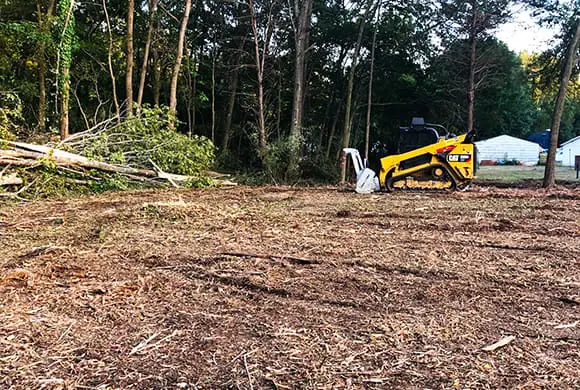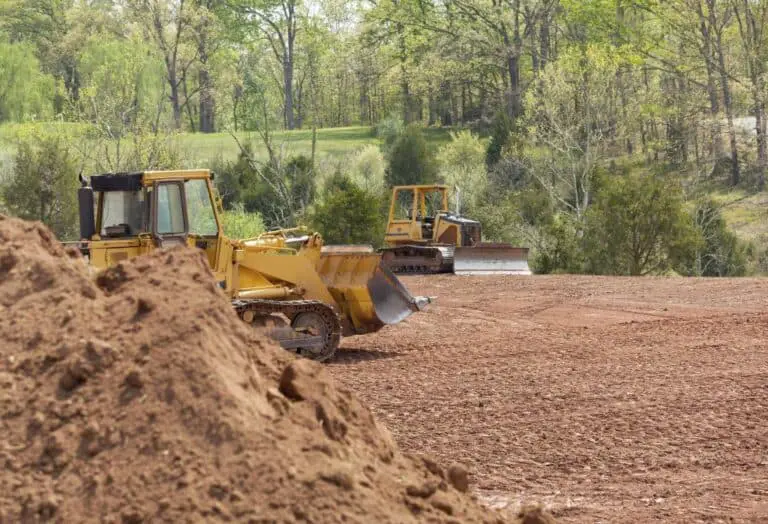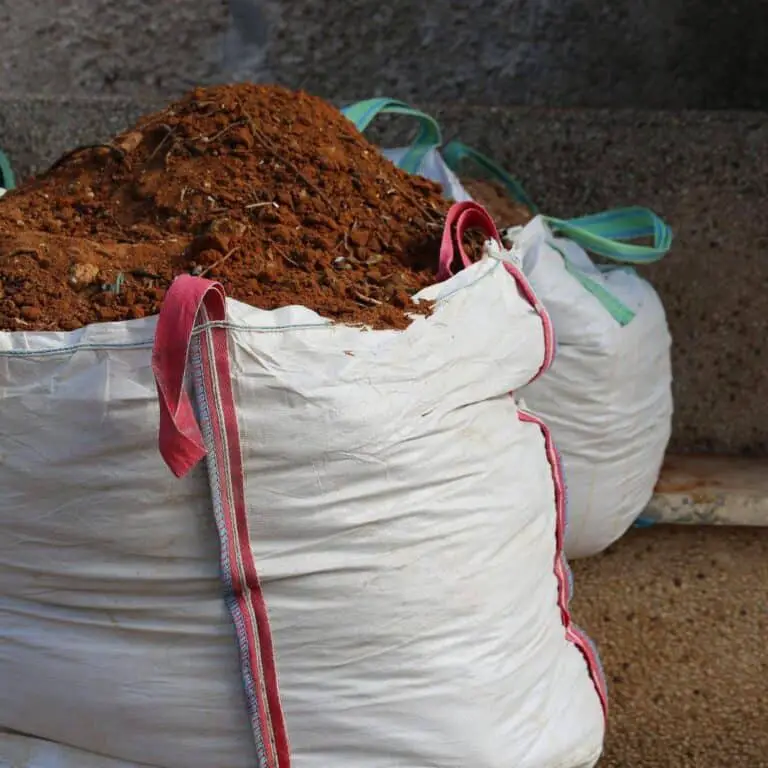Is Land Clearing a Good Profitable Business? (Cost & Business Plan)

Land clearing is the process of removing trees, bushes, and other obstacles from a piece of land to make it suitable for development or agriculture. While it may seem like a challenging and labor-intensive process, land clearing can be a profitable business opportunity for those willing to invest in the necessary equipment and expertise.
In this article, we’ll explore the ins and outs of the land clearing industry. We will explore the costs and business plan for starting a land clearing business and discuss whether it is a profitable venture.
Whether you’re an entrepreneur looking to start a new business or a seasoned professional seeking to expand your services, this guide will provide valuable insights to help you succeed in the land clearing industry. So, let’s dig in and find out if land clearing is a profitable business!
Brief Overview of Land Clearing as a Business
Land clearing is a specialized industry that involves removing unwanted vegetation, trees, and debris from a piece of land to make it suitable for agricultural, commercial, or residential use.
Land clearing businesses play a crucial role in the development of land for various purposes, and their services are in high demand across the world. These businesses use a variety of equipment and techniques to clear land, including manual labor, heavy machinery, and controlled burning.
Starting a land clearing business can be profitable, like a profitable forestry mulching business venture, but it requires a significant investment in equipment, personnel, and marketing. Entrepreneurs must have a deep understanding of the industry, the market, and the local regulations to succeed in this business.
Moreover, the costs of running a land clearing business can be substantial, including equipment costs, insurance, fuel, labor, and permit fees. As such, it’s essential to conduct a thorough cost analysis and create a solid business plan before starting a land clearing business.
Despite the challenges, land clearing can be a lucrative business for those who are willing to put in the effort and investment. The demand for land clearing services is expected to grow as the global population increases, and more land is needed for development.
In addition, there are various revenue streams that land clearing businesses can tap into, including land preparation, excavation, site clearing, and debris removal. With proper marketing and customer acquisition strategies, land clearing businesses can build a strong customer base and generate a steady stream of income.
Is Land clearing a Profitable Business?
While the cost of starting a land clearing business can be significant, it can also be a profitable venture for those willing to invest in the necessary equipment and expertise.
The profitability of a land clearing business can vary depending on several factors, including the size of the operation, the demand for services in the area, and the cost of labor and equipment.
According to industry experts, the average profit margin for a land clearing business is around 10%. However, this can vary depending on the size of the operation and the demand for services in the area. With proper planning and execution, a land clearing business can be a profitable and sustainable venture.
The Cost of Starting a Land Clearing Business
Starting a land clearing business requires a significant investment in equipment, labor, and insurance. The cost can vary depending on several factors, including the size of the operation and the type of equipment required. Here is a breakdown of the typical costs associated with starting a land clearing business:
1. Equipment Costs
The most significant cost associated with starting a land clearing business is the purchase of equipment. This includes heavy machinery such as bulldozers, excavators, backhoes, and chainsaws. The cost of this equipment can range from $50,000 to $500,000 or more, depending on the size and scope of the operation.
2. Labor Costs
Land clearing is a labor-intensive process that requires a skilled workforce. The cost of labor can vary depending on the region and the expertise of the workers. The average wage for a skilled laborer in the land clearing industry is $15 to $25 per hour.
3. Permit Fees
Many jurisdictions require land clearing businesses to obtain permits before they can start operations. Permit fees can vary depending on the location, the type of permit, and the complexity of the project. It’s important to factor in these costs when preparing a budget.
4. Insurance Costs
Insurance is a critical component of any land clearing business. The cost of insurance can vary depending on the type of coverage required and the size of the operation. It is essential to have liability insurance to protect against any accidents or damages that may occur during the clearing process.
5. Fuel Costs
The cost of fuel can be a significant expense for land clearing businesses, especially for heavy equipment that consumes a lot of fuel. Fuel prices can fluctuate depending on market conditions, so it’s essential to factor in these costs when preparing a budget.
6. Marketing Costs
To attract new customers, land clearing businesses must invest in marketing and advertising. This can include creating a website, printing business cards, attending trade shows, and running social media campaigns. The cost of marketing can vary depending on the strategy and the target audience.
7. Miscellaneous Costs
Other expenses associated with starting a land clearing business include office rent, utilities, phone bills, and office supplies. These costs may not be significant, but they can add up over time.
Developing a Business Plan for a Land Clearing Business
Developing a comprehensive business plan is crucial to the success of any new business venture. A well-thought-out plan will help identify potential obstacles and opportunities and provide a roadmap for achieving success. Here are the key components of a business plan for starting a land clearing business:
1. Executive Summary
The executive summary should provide an overview of the business plan and include key details such as the business name, location, and services offered.
2. Market Analysis
A market analysis should be conducted to identify potential customers and competitors in the area. This analysis should also consider factors such as the size of the market and the demand for land clearing services.
3. Services Offered
The business plan should clearly outline the services offered by the land clearing business, including the type of equipment used and the expertise of the workforce.
4. Marketing and Sales Strategy
The marketing and sales strategy should detail how the business plans to attract and retain customers. This may include advertising, promotions, and customer referral programs.
5. Financial Projections
The financial projections should outline the expected revenue, expenses, and profits of the business over the first few years of operation. This should include details such as startup costs, operating expenses, and projected revenue streams.
How Much Does Land Clearing Cost per Acre?
Land clearing costs can vary widely depending on several factors, including the size and complexity of the job, the type of vegetation being cleared, and the equipment and labor required to complete the task. On average, land clearing can cost anywhere from $500 to $10,000 per acre, with prices typically falling between $1,500 and $3,000 per acre.
The more difficult the terrain and the denser the vegetation, the higher the cost will be. Additionally, the cost of equipment and labor can also significantly impact the overall price of land clearing.
Mechanical land clearing methods, such as using bulldozers, excavators, or tree shears, tend to be more expensive than manual methods such as hand clearing or controlled burning. However, mechanical methods can be much faster and more efficient, which can make them more cost-effective for larger-scale clearing projects.
Another factor to consider when estimating land clearing costs is the cost of waste disposal. The cost of hauling and disposing of cleared debris can add up quickly, particularly if the job involves a large amount of wood, vegetation, or other materials.
It is important to note that while land clearing costs can be significant, they are a necessary investment for any land clearing agricultural operation. Properly clearing land can create a clean slate for planting crops or establishing pastureland, which can ultimately lead to increased productivity and profitability for farmers and ranchers.
In addition to the direct cost of clearing land, it is also important to consider the potential long-term benefits of the cleared land. Cleared land can provide additional acreage for planting crops, grazing livestock, or building infrastructure. It can also improve access to water and other natural resources, which can be crucial for sustainable agricultural practices.
Conclusion
Land clearing can be a profitable business opportunity for those willing to invest in the necessary equipment and expertise. The costs associated with starting a land clearing business can be significant, but with a well-developed business plan and a skilled workforce, it can be a successful and sustainable venture.
The profitability of a land clearing business will depend on several factors, including the size of the operation, the demand for services in the area, and the cost of labor and equipment.






